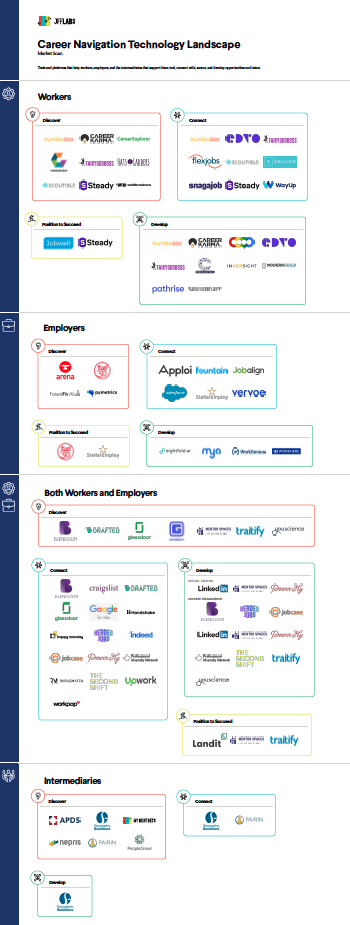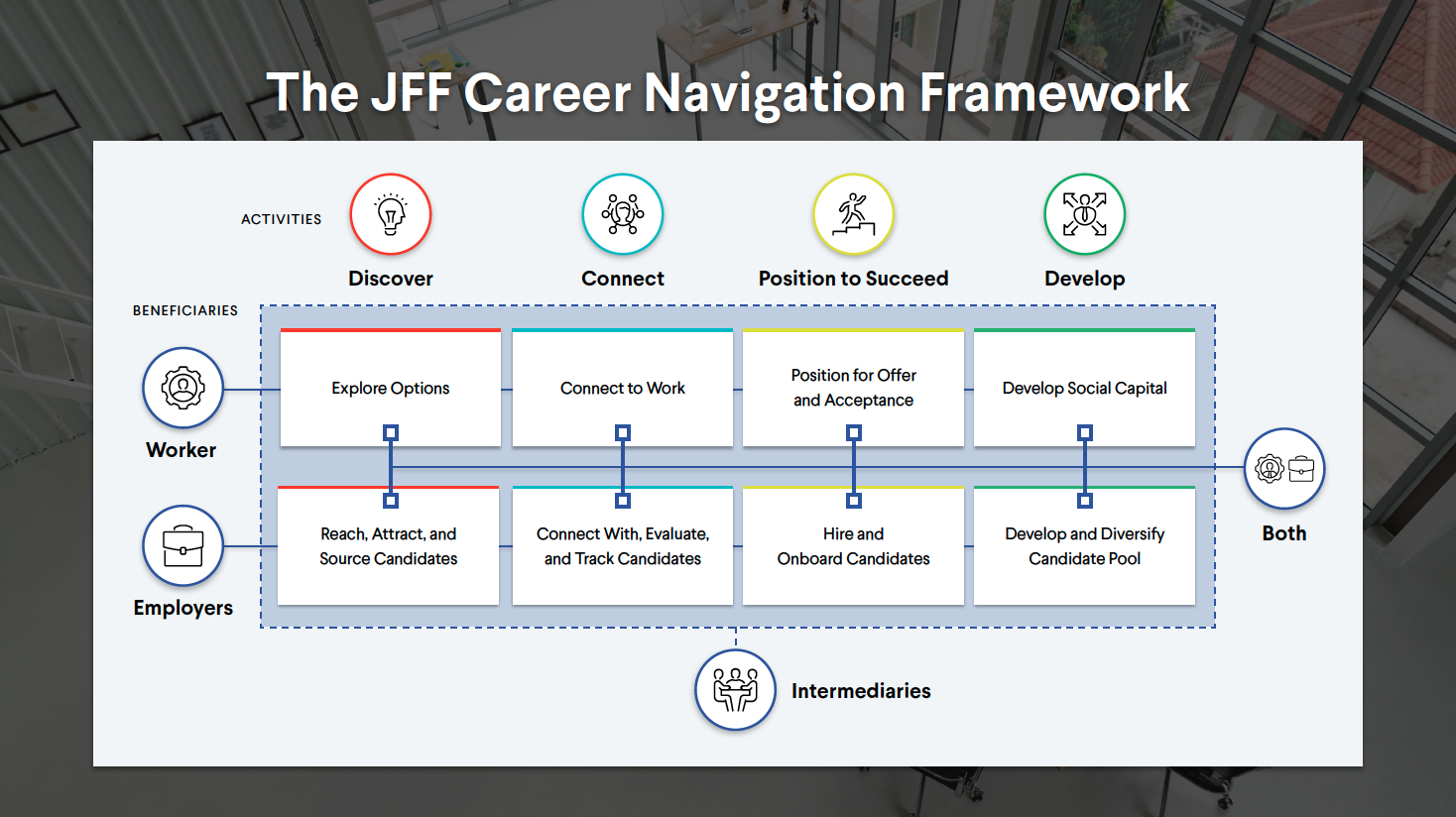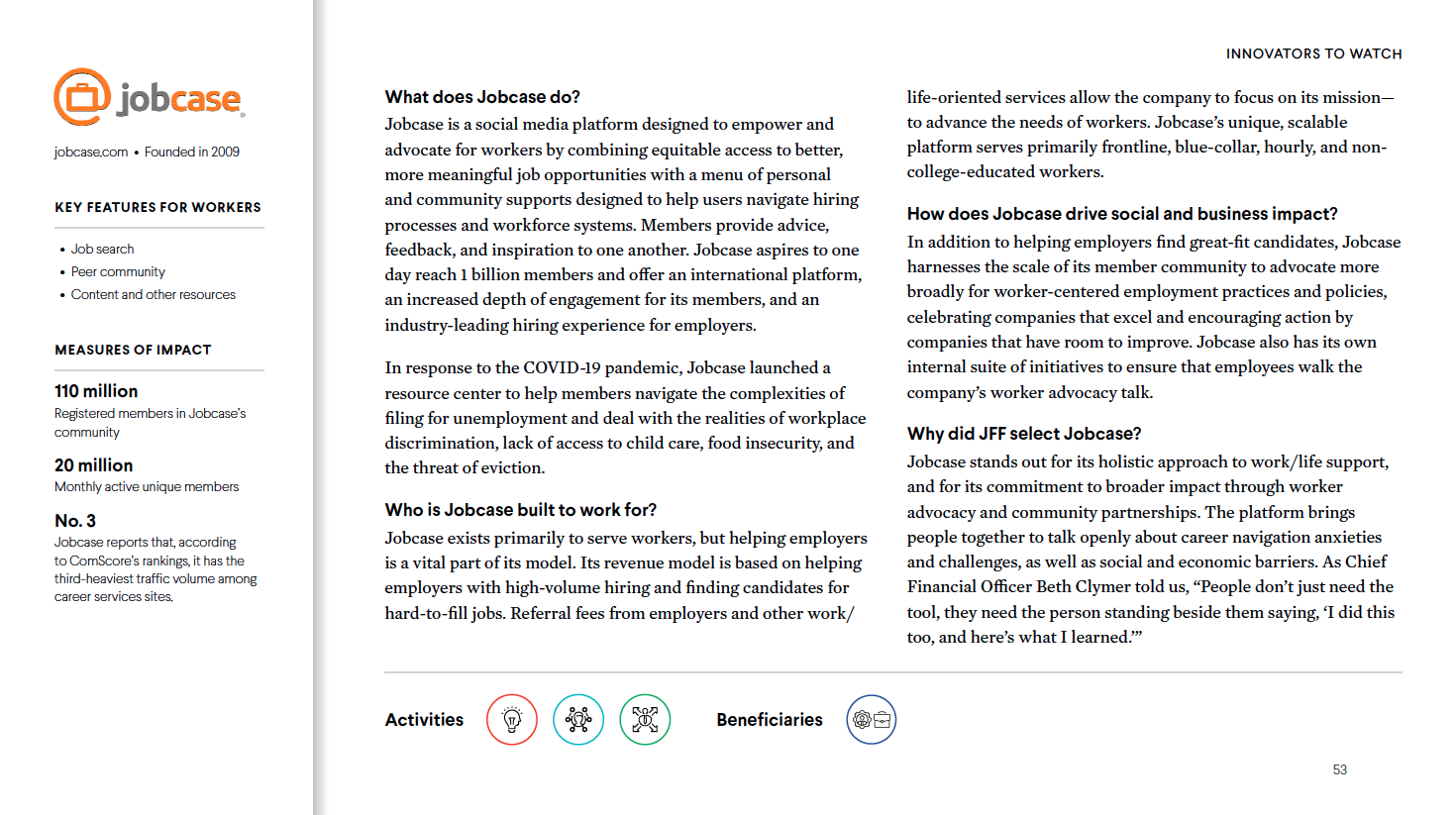The economic crisis of 2020 revealed that workers need to follow career paths more defined by variety and near-constant change than consistency.
Building a stable, sustainable working life across the many jobs and industries that make up a contemporary career requires a new set of skills: adaptability, resilience, self-reflection, and self-directed lifelong learning.
What’s clear is that platforms for employers seeking workers are seemingly everywhere, as are tools for corporate workers looking for new professional opportunities. But for the well over half of American workers in entry-level or mid-skill jobs, the process of finding a career is chaotic, seemingly random, and ultimately broken.
Framing career navigation as a lifelong process that involves workers, employers, and other entities, such as schools and workforce boards, Career Navigation Technology 2020 delves into the dynamics shaping the career navigation technology market, identifying innovations, trends, and areas of opportunity. For the first time, advances in technology have the potential to offer all workers meaningful, robust, and personalized supports—and we celebrate the companies that are leading the way.










